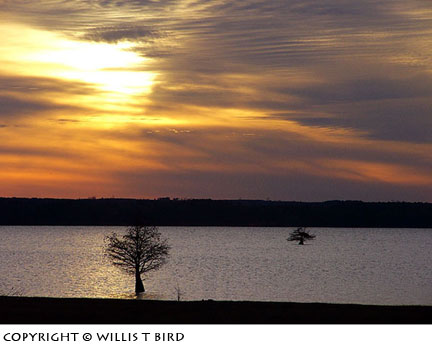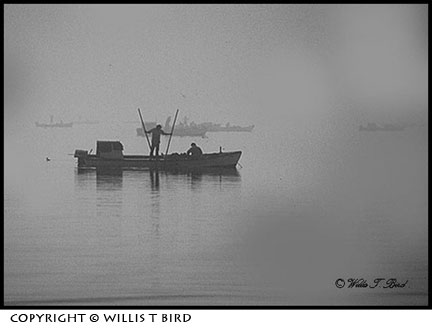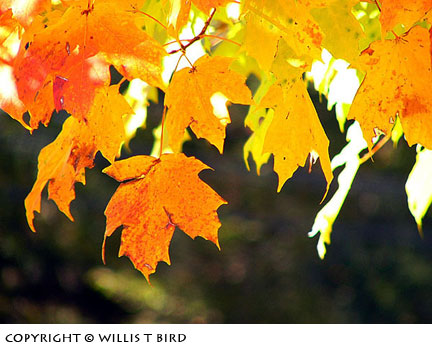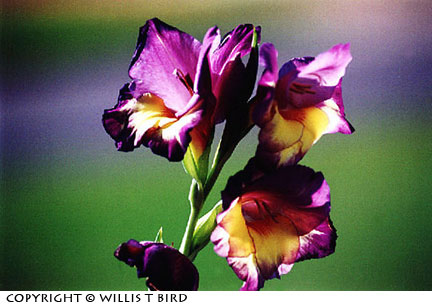
Lighting is a very difficult part of photography to master. But photography is all about controlling and using light so it is necessary that one understands as much as possible about this part of photography. You don’t want to get either too little or too much light on your subject or you will not have the best of pictures. I will divide lighting into three primary types below:
Backlighting: This is light that comes in from behind your subject and can make a beautiful photo if done correctly. It can make silhouettes of the subject or the subject can be lit to show up by using flash or other means.
Side Lighting: Just as it says…the light comes in from one side or the other. This can cast shadows that you have to work with. One side will be lit up while the other is in darkness. This can give a very harsh effect. Sometimes this may be wanted and at other times, not.
Artificial Lighting: This can be a light source such as bulbs in studio lights or flash on your camera. This is usually done inside or in a deeply shadowed area outside. The idea is to get enough light on the subject to properly see all the features.

There are variations on all these lighting types. For instance, you can have overhead lighting from either artificial or sunlight. This is not usually the best type of light to work with and often gives harsh results. Diffused lighting is another variation that can work to your advantage. This is used when you wish to soften the light that is hitting your subject. Bright sunlight of mid-day is the worst kind of lighting and often causes colors to be washed out or makes the contrast of shadowed areas too great. Outside you can wait for a cloud to move between you and the sun or you can place an umbrella type shielding between the subject and the sun. This will soften the light’s effects and make a better photograph. So the old tale of putting the sun at your back and bright sun on your subject does not hold true today. Back in the day of very slow film speeds, perhaps that would work better, but not today.
Natural light comes from the sun, moon and reflected daylight. Artificial light comes from lamps, Studio lights, and flash. Is “fire” natural or artificial? Put it where you will but I place it in the artificial category (i.e.; a candle. All of these are used to create a mood.
When shooting photos of people, one must consider the angle the light hits the subject as it will cause shadows that can either help or detract from the subject. So look at this carefully before making your shot.
Artificial lighting will cause strange things to happen to film. So you must be careful to study your film and see if you require certain filters to make subjects in front of light bulbs or flourescent lights look natural because these types of lights will cause odd skin tones. There are films that help with this as well as filters. I will not go into that in depth here but be aware of it and look into this before you start taking portraits.

Since I know more about backlighting, I will concentrate on that here. Backlighting is a special technique used by photographers that can create unique images. Backlighting means that the light source is behind the subject instead of behind the photographer. This may be completely opposite of what you may have read or been told about photographic lighting. However, being different in your photography is a big advantage at having your work stand out from the ordinary. This is one way you can make your photos different.
When you see a photograph that contains silhouettes, it is normally due to backlighting of the subject. If you prefer not to have such silhouettes in your shot, you may want to introduce flash to reduce the darkness and lighten the foreground. Another method is to use a reflector of some type to shine the light source back onto the subject. This can be bought or made of a white or shiny surfaced material.
Backlighting of plants, leaves, etc. can bring out the details within the plant. This can be extremely interesting visually. Many colors become vivid with backlighting such as leaves on trees in the Fall making it appear that they have a light source all their own. Backlighting can create moods. Anything in the foreground of a sunset shot will be back lit. Use this to your advantage and choose your spots carefully when taking sunsets or sunrises so that you have something in your foreground. It will improve the overall photo greatly.

Measuring the amount of light is usually done by light meters. In the past this was done with hand held meters. Later meters began to be attached to the cameras; then light meters were built into the camera. Most of us use this meter to determine if we have enough, too much, or too little light on the subject. These internal meters are pretty good but not perfect. Often you need to adjust your camera settings to fool the meter a little. If your readings tend to give you over exposed photos most of the time, then you may want to adjust the settings on your camera to compensate. Here, I will refer you to your manual to learn how to do this as all cameras, while similar, are different. Yes…read the manual, as distasteful as that my sound.
Photography is all about controlling light. Good light can make or break a photograph. Scenic and landscape photographers usually go out early in the morning or late in the afternoon to catch the best light. Mid-day is the very worst time to take outdoor photos. So watch your light sources and let your light shine in your photographs.
by Willis T. Bird

Leave a Reply